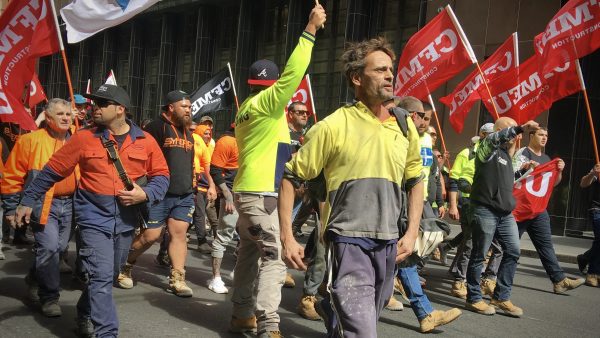
Workers in the United States are experiencing a growing number of strikes across the country. Record numbers of job openings, employee departures, and desperation among employers across sectors are empowering workers to push for change. But how are strikes today different from those in the recent past? And what predictions might research forecast?
Economic strikes, when workers withhold their labor to pressure employers to increase their pay or working conditions, are risky for workers. Employers hold the right to permanently replace striking workers and “strike-breakers” (people hired to replace strikers) often gain legal protections in their new positions. However, strikers today seem to have the wind at their back. According to the Bureau of Labor Statistics, in recent months the U.S. has seen the highest rates of worker “quits” in decades. Furthermore, research suggests that workers are choosing to not return to work, even as COVID-19 unemployment benefits are reduced or eliminated.
- Alex Gourevitch. 2018. “The Right to Strike: A Radical View.” American Political Science Review 112(4): 905-917.
Research on the nature of contemporary strikes has shown that they have been largely defensive, where workers were pushed to the breaking point and striked reactively. Alternatively, offensive strikes arise during more opportunistic climates and are initiated by workers. Under these opportune conditions with dwindling labor competition, workers gain some degree of leverage at the bargaining table with management.
- Michael Wallace. 1989.”Aggressive Economism, Defensive Control: Contours of American Labour Militancy, 1947-81.” Economic and Industrial Democracy 10(1):7-34.
- Andrew W. Martin and Marc Dixon. 2010. “Changing to Win? Threat, Resistance, and the Role of Unions in Strikes, 1984–2002.” American Journal of Sociology 116(1):93-129.
Sociological research has tracked union membership and its effects on inequality. For example, Western and Rosenfeld report that between 1973 and 2007, US private sector union membership fell from 34 to 8 percent for men and from 16 to 6 percent for women. Numerous studies have tied this decline in unionization to wage inequality and earnings instability.
- Bruce Western and Jake Rosenfeld. 2011. “Unions, Norms, and the Rise in U.S. Wage Inequality.” American Sociological Review 76(4):513-537.
- Jake Rosenfeld. 2019. “US Labor Studies in the Twenty-First Century: Understanding Laborism Without Labor.” Annual Review of Sociology 45(1): 449-465.
Tom VanHeuvelen. 2018. “Moral Economies or Hidden Talents? A Longitudinal Analysis of Union Decline and Wage Inequality, 1973–2015.” Social Forces 97(2): 495–530.
In recent years, unions have increasingly engaged with coalitions and/or community groups interested in social change. By organizing with other groups, workers connect and create networks that address mutual concerns. Social issues such as fair wages, organizational policies, and the exportation of jobs are then materialized and humanized during strikes – giving a platform for societal discussion for these social issues. This empowerment through favorable conditions, paired with a heightened cooperation with social change coalitions may be forming an impending, perfect storm for worker-initiated strikes.
- Marc Dixon and Andrew W. Martin. 2012. “We Can’t Win This On Our Own: Unions, Firms, and Mobilization of External Allies in Labor Disputes.” American Sociological Review 77(6): 946-969.
In today’s era of a globalized workforce, ongoing public health crises, social media, and strike activity, another wave of social change may be in the air.

Comments